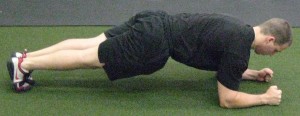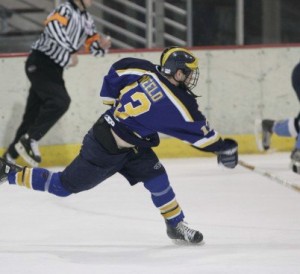As promised…my favorite rotational core training exercise. This is actually an ANTI-rotation exercise, developed by and named after physical therapist John Pallof. Remember that the primary function of the core musculature is to provide stability in the presence of internal and external forces causing movement. Essentially all this exercise involves is setting up something (like a cable column, resistance band, or mature partner) to provide a rotational force and actively resisting it. Try to avoid just throwing a resistance band handle around a door knob, lest you are preparing for an America’s Funniest Home Video entry (trust me…DONT do that).
[quicktime]http://kevinneeld.com/videos/Pallof%20Press%20Hold.mov[/quicktime]
You basically want to keep your hips and shoulders square, and centered between your feet during the exercise. I’ve found that thinking of “spreading the floor” with your feet helps to maintain this position. This exercise can be performed for reps (10 out and ins), time (30s hold out), or both (3 x 5s in/5s out). Obviously the more time spent out, the harder. I prefer the 30s holds, but play around with it and decide for yourself.
I’m currently giving away a copy of the session on Core Training from my new Off-Ice Training eCourse. The session goes into more detail about some of the things I’ve talked about over the last week and has a ton of exercises in it. Considering how many myths and poor training methods surround core training, you won’t want to miss this! Just enter your first name and email address in the top right hand corner of my site and I’ll send you the download link ASAP.



